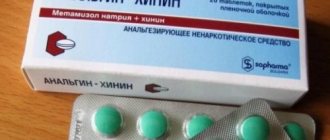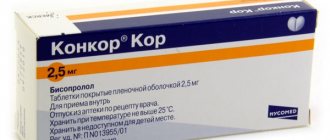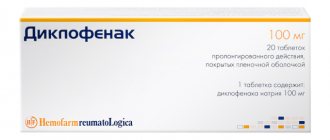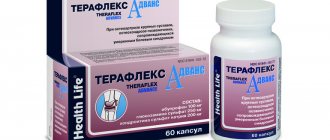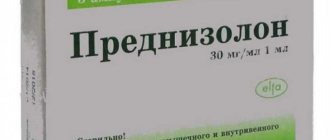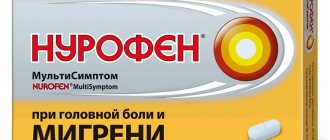Perhaps the most popular group of drugs, leading in terms of total sales worldwide, are drugs from the NSAID group - non-steroidal anti-inflammatory drugs. They were named so because steroid drugs (glucocorticosteroid hormones) are the absolute standard for the strength of the anti-inflammatory effect. Hormonal medications such as dexamethasone or prednisolone have such a strong anti-inflammatory effect that they can cause immune suppression if taken for a long time.
Drugs from the NSAID group do not have this drawback. It is estimated that every day in the world more than 35 million people take drugs from the NSAID group. These medications can have the following effects (to varying degrees):
- analgesic (analgesic) effect;
- anti-inflammatory effect;
- antipyretic effect.
Considering that a very large number of diseases - from arthritis to headaches, from flu to postoperative pain syndrome - occur with signs of pain, fever and inflammation, the popularity of these drugs becomes understandable.
Meloxicam is one of the most effective and safe drugs from the NSAID group. Taking meloxicam is effective and safe. Of course, uncontrolled use of any drug can lead to side effects and complications. Therefore, any medicine from the NSAID group (even aspirin) should be used with a doctor’s prescription, despite the fact that almost all of them are sold without a prescription.
Many patients are interested in what is better: Meloxicam or Movalis? There are also many questions about why it is safer than diclofenac, what are the indications for its use and the names of analogues. Let's answer these and other questions. But first of all, let’s talk about how this medicine works.
Pharmacological properties
The active substance Meloxicam is a derivative of enolic acid. When taken, it has the following effects:
- anti-inflammatory;
- painkiller;
- antipyretic, that is, helps reduce the patient’s body temperature.
The mechanism of the anti-inflammatory effect of the drug is associated with inhibition of prostaglandin production. These biological substances are released by immune system cells in damaged tissue and cause pain and swelling in the area. Unlike other NSAIDs, Meloxicam has little effect on the gastric and intestinal mucosa, so its use rarely leads to the development of gastritis and exacerbation of peptic ulcers.
Mechanism of action of Meloxicam
Meloxicam tablets block the synthesis of prostaglandins. These fat-soluble substances increase in quantity in response to inflammatory reactions. They are called inflammatory mediators. Previously, to combat the increased production of prostaglandins, drugs were used, under the influence of which bronchospasms and allergic reactions developed.
The drug belongs to a new generation of medications that selectively inhibit COX-2. This significantly reduced the risk of complications. The active substance of the same name is evenly distributed throughout the tissues and has a prolonged reaction. Successfully penetrates into synovial fluid.
The drug Meloxicam prevents lipid oxidation and the formation of free radicals. However, it does not change the structure of the cartilage; this effect was found when taking other tablets of similar action, but of earlier generations.
Composition and release forms
The medication is produced in the form of tablets and injection solution. The tablet form usually contains 7.5-15 mg of the main substance (Meloxicam). Additional components contained in the tablets:
- cellulose;
- povidone;
- glucose monohydrate;
- sodium citrate;
- Magnesium stearate, etc.
The solution is sold in 1.5 ml ampoules, each containing 15 mg of anti-inflammatory substance. In addition to the active substance, the solution contains auxiliary ingredients: sodium chloride, meglumine, sodium hydroxide, injection water, etc.
Cost and analogues
The price of Maximim depends on the dosage and varies from 180−220 rubles for 500 mg, 350−400 rubles will cost 1 g. Interestingly, on the Internet you can often find complex offers - buy 2 medicines at once (for example, Maximim and which -an antidiarrheal agent to restore intestinal microflora after taking antibiotics).
It should be recalled that before purchasing any medications, it is better to consult with your doctor to avoid side effects and harm to your body.
Analogs of Maximim are for the most part cheaper generics (some of which are half the price of the original drug). Moreover, they all have a common active component - cefepime. The most common analogues are:
- Ladef.
- Cefomax.
- Kefstar.
- Zinnat.
- Maxiceph.
- Movisar.
- We chain.
- Cefepime (with various prefixes - Jodas, Alpa, Alkem, Agio, Vial).
- Ephipim.
The Indian manufacturer produces many similar drugs with cefepime as an active ingredient - Adzhitsef, Abipim, Veksapim, Denipim, Maxinort, Novapim, Quartacef, Hipim, Pozineg. You can also highlight the UK - Extenzef, Cefotrin, Septipim, Iran - Exipim and Ukraine - Cefimek, Tsebopim, Quadroceph, Focepym. The average price for a package with a concentration of 500 mg is 100 rubles, and for a concentration of 1000 mg - 130-180 rubles.
However, if the goal is to find a similar drug with a different active ingredient, then it is necessary to look for analogues among the fourth generation of cephalosporin antibiotics. Obviously, the selection and prescription of antibacterial therapy should be strictly in accordance with the instructions of the attending physician.
Full-fledged analogues are Cefpir (Cefactive, Cefanorm, Keiten, Izodepom), Cefquin, Cefclidine, Cefluprenam and Cefozopran.
Reception
Meloxicam: instructions for use in detail.
The tablet form of the medication is indicated for use in diseases with moderately severe inflammatory changes. It is recommended to take the drug with meals, the daily dose is 7.5-15 mg, which is equivalent to one or two tablets. You should not take more than 15 mg of medication per day.
For patients with significantly impaired kidney function, the maximum daily amount of medication is 7.5 mg. If the decrease in the function of the urinary system is insignificant and the creatinine clearance does not exceed 25 ml/min, there is no need to reduce the dose. This also applies to patients with cirrhosis of the liver.
The injectable form of the drug is used for significant inflammatory changes in tissues. The drug is administered intramuscularly in the first two to three days of therapy, after which it is switched to oral administration.
The dose of the drug for intramuscular administration is the same as for oral administration, the amount of medication depends on the severity of the pain syndrome. The medicine is administered once every 24 hours, the maximum dose does not differ from that for Meloxicam tablets.
Instructions for use
Meloxicam tablets are taken once daily with meals with 250 ml of liquid. Injections are performed exclusively intramuscularly. Intravenous administration of the drug is contraindicated. The solution is administered in the first days of treatment, after which the tablets are started. To treat exacerbations of arthrosis, take 7.5 mg once a day.
In cases where the therapeutic effect was not achieved, the dosage is increased to 15 mg. For the treatment of rheumatoid arthritis and ankylosing spondylitis, take 15 mg of the drug once a day. When the result is noticeable, the daily dose can be reduced to 7.5 mg. Taking tablets in a dosage exceeding 15 mg is not recommended.
According to the instructions for Meloxicam, patients on dialysis who suffer from renal failure are prescribed to take no more than 7.5 mg/day. Patients with mild to moderate renal pathologies should not adjust the dosage.
Elderly patients suffering from rheumatoid arthritis and ankylosing spondylitis are prescribed to take 7.5 mg for long-term therapy, and if there is a risk of side effects, the dosage cannot be increased. Judging by the collected reviews about Meloxicam, patients with moderate or mild pathology of liver function do not need to reduce the dosage.
Indications
The medicine is used primarily for the treatment of inflammatory diseases of the joints, in which severe pain occurs:
- rheumatoid arthritis;
- chronic forms of polyarthritis associated with various causes;
- acute phase of arthrosis;
- spondylitis.
In addition, it is used to relieve pain during exacerbation of radiculitis. Also, indications for the use of Meloxicam include symptomatic treatment of degenerative pathologies of the spine and joints: osteoarthritis, ankylosing spondylitis, etc.
Contraindications, side effects
If the recommendations for taking the medication are not followed, undesirable reactions may develop. If the digestive system is affected, the patient may complain of dyspepsia, diarrhea, and nausea. Infrequently, conditions such as exacerbation of gastritis, esophagitis, and gastric ulcers may occur. Skin symptoms may also occur: itching, rashes. The appearance of urticaria and increased sensitivity of the skin to solar radiation are less common. From the hematopoietic system, the patient may experience anemia, which is manifested by a decrease in the number of red blood cells, as well as a decrease in the level of leukocytes and platelets.
Meloxicam should not be used in the following cases:
- if you are sensitive to the components of the drug. Patients who are allergic to aspirin and other anti-inflammatory drugs should also avoid taking the drug - a cross-reaction may occur;
- bronchial asthma, laryngeal edema, urticaria, which are associated with taking NSAIDs;
- stomach ulcer in exacerbation or in remission;
- inflammatory bowel pathologies, such as Crohn's disease;
- insufficient kidney or liver function.
It is prohibited for women to use the medicine during pregnancy and breastfeeding. If the patient is under 18 years of age, he should refuse to take Meloxicam and choose a similar remedy.
Contraindications and special instructions
Individual intolerance to L-arginine and cefepime is the main contraindication to taking Maximim. This should also include hypersensitivity to all antibacterial beta-lactam drugs based on cephalosporins or penicillins.
In some cases, pregnancy, as well as the period of breastfeeding, may serve as a basis for discontinuing the drug and searching for an analogue. Clinical studies have not shown any obvious harm from cefepine to the fetus or mother, but they were conducted on animals, and there is no full and well-controlled study of the drug's effect on pregnant women.
Patients with diseases of the gastrointestinal tract (enteritis, ulcerative colitis) should also be careful when taking the drug. The release of cefepime into breast milk has been recorded, however, in extremely low concentrations, which makes it possible in some cases to allow the use of the drug during the feeding period.
Analogues, price category for different forms
The cost of the medicine in the form of an injection solution is usually 115-120 rubles. As for tablets, their price can vary significantly - you can find a package for 25 or 50 rubles. The drug in the form of suppositories is much more expensive - on average 250 rubles per package. The most common similar means include:
- Melox;
- Movalis;
- Movix;
- Amelotex;
- For medical professionals;
- Artrosan and others.
These drugs are structural analogues of Meloxicam. This means that they have the same active ingredient. However, there may be variable efficacy in the treatment of inflammatory diseases. This is due to a different set of excipients, as well as differences in drug production technology.
Description of the drug
The drug belongs to the oxicam group and is considered a non-steroidal anti-inflammatory drug. The main actions of the drug are aimed at reducing pain and inflammatory syndromes.
Meloxicam is highly effective among drugs of similar action, but its pricing policy is much lower.
Today the drug has several varieties:
- Meloxicam Teva;
- Meloxicam Pharmaplant;
- Meloxicam STADA;
- Meloxicam SZ;
- Meloxicam TEVA;
- Meloxicam Pfizer;
- Meloxicam Prana;
- Meloxicam OBL.
This group also includes drugs based on meloxicam, namely Chondroxide Forte, Liberium, Amelotex.
Meloxicam has the following ingredients: meloxicam, corn and regular starch, magnesium stearate, sodium citrate, aerosil, lactose monohydrate, microcrystalline cellulose.
Meloxicam is also available in the form of a solution for intramuscular injection. The drug contains meglumine, poloxamer 188, glycofurol, sodium chloride, sodium hydroxide, water for injection and the main drug.
In addition to domestic manufacturers, these products are also produced by foreign companies: Israel (TEVA Pharmaceutical Industries), USA (Pfizer), India (Aurobindo pharma), Vietnam (Mekophar chemical-pharmaceutical), China (Zhangjiakou kaiwei pharmaceutical).
In the Russian Federation, Meloxicam is produced by the following companies: Stada CIS, Nizhpharm, Northern Star, Pranapharm, Makiz Pharm, Altfarm and others.
Pharmacological properties of Meloxicam
Meloxicam is used to relieve pain, reduce fever and reduce inflammation in the body. They are well absorbed by the body and are found in full in the blood 6 hours after ingestion.
A week after completing the course of treatment, the drug in the blood stabilizes and shows normal levels.
The normal amount of the drug in the blood is considered to be the following: 0.4-1 mg per liter of blood, this is provided that the patient took Meloxicam tablets with a capacity of 7.5 mg.
Safety measures, simultaneous use of different forms of the drug and with other medications
To reduce the likelihood of side effects, you should carefully read the instructions for use and follow your doctor's recommendations. If any manifestations of gastrointestinal pathology (pain, nausea, indigestion) appear while taking the drug, the use of Meloxicam should be discontinued and the doctor should be informed. The medicine should not be administered in different forms at the same time, as this is impractical.
As for drug interactions, this drug should not be administered together with other anti-inflammatory medications. With the simultaneous use of such drugs, the risk of developing gastrointestinal bleeding and exacerbation of peptic ulcer increases. For the same reason, it is not recommended to take Meloxicam together with indirect anticoagulants, heparin.
When used simultaneously with diuretics, exacerbation of renal pathology and dysfunction of the urinary system are possible. Use with Methotrexate can lead to inhibition of hematopoiesis and the development of anemia.
special instructions
Before taking cefepime, it is necessary to ensure that the patient is not allergic to medications; If this is the case, it is recommended to stop taking Maximim. You should be aware that most broad-spectrum antibiotics can cause acute diarrhea (pseudomembranous colitis); in this case, the use of cefepime should also be abandoned.
There is also a small probability of developing superinfection (repeated infection occurring against the background of the underlying disease).
Cefepime, like almost all beta-lactam antibiotics, must be administered separately from other prescribed antibiotics (eg, vancomycin, metronidazole, tobramycin sulfate, gentamicin and netilmicin sulfate).
Monotherapy using cepefim allows the drug to be taken until the type of microorganism is determined. To date, there is insufficient clinical data to confirm the advisability of using cefepime for the treatment of children under two months of age or in children with Haemophilus influenzae infection.


